Travel
Dreaming of Italy? We’ve Rounded Up the Best of Art, Design, and La Dolce Vita in Milan and Puglia
Some would say that the country is having a new Renaissance.
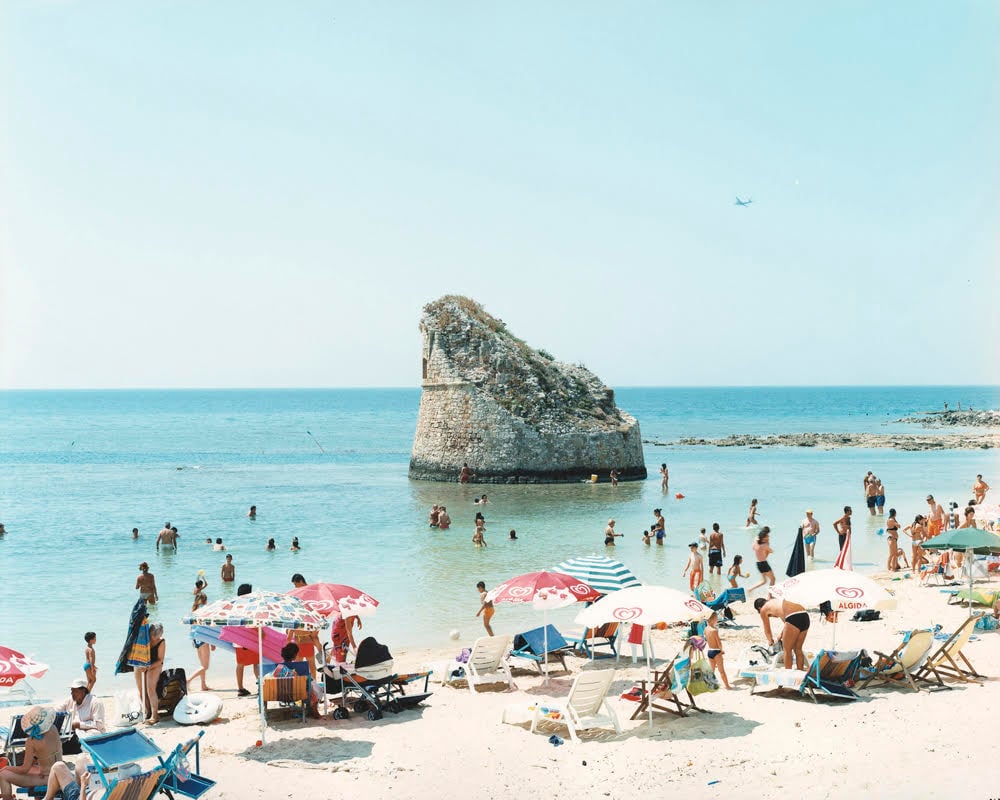
Some would say that the country is having a new Renaissance.

Artnet News in Partnership With NetJets

If we were to rank the travel destinations of our lockdown dreams, Italy would surely top the list. With its famously varied and invariably stunning landscape—not to mention the food, the fashion, the fair bit of art history—vacationing on the boot-shaped peninsula is pretty much as good as it gets.
Thankfully, a year and a half after it shut down, the Bel Paese is rebooting. Between Milan’s lively contemporary art and design scene, and the southern pull of Puglia, some would even say the country is having a new Renaissance. And NetJets—the global leader in private aviation—is ready to take you there from top to toe (or heel, in this case).
For discerning travelers looking to rediscover la dolce vita and the joys of a quick jaunt to Italy (with as little as 10 hours’ notice, no less), NetJets offers personalized service with heightened attention to detail gained from more than 55 years of experience, industry-leading standards, and a multilingual team dedicated to anticipating your every need.
Buon viaggio!
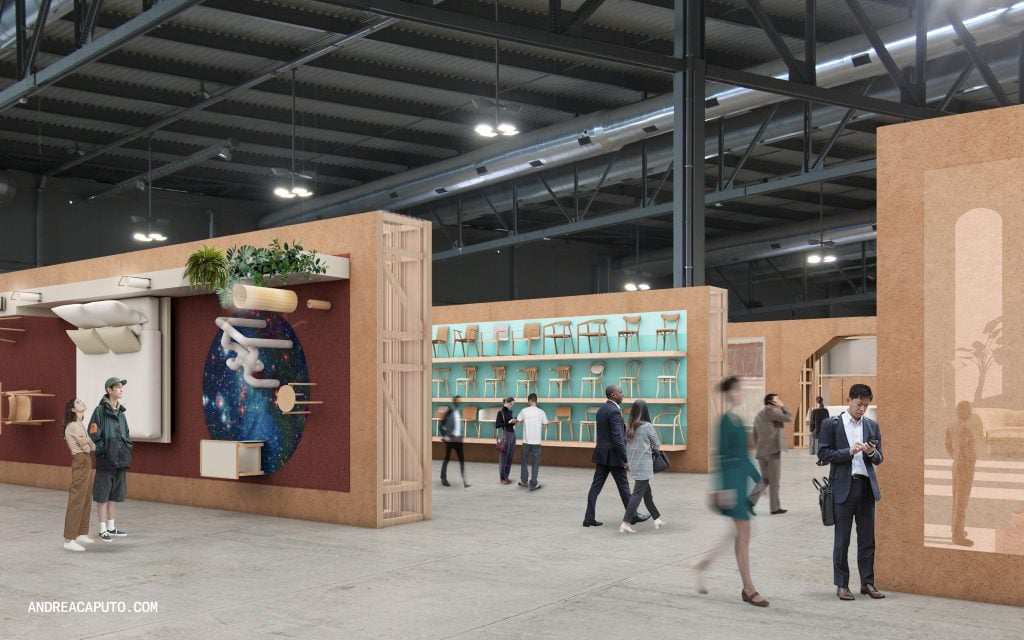
A rendering of the 2021 Salone del Mobile fair, “Supersalone.” Courtesy of Salone del Mobile Milano.
See and Do: Following an 18-month hiatus, Salone del Mobile (September 5–10) is back in a new, “phygital” form. Titled “Supersalone,” the 58th edition of this preeminent international design fair is curated by local architect Stefano Boeri (the power behind “vertical forests” such as Milan’s Bosco Verticale tower) with sustainability in mind.
You’ll enter through 200 ash, lime, oak, and flowering plum trees set to be planted across Milan after the end of the fair. And brands will display their products along the walls of four recycled-timber pavilions within the fairgrounds, which are opening to the public for the very first time.
The fair expands from the city’s outskirts and into the center with an exhibition on its history at the Triennale Design Museum, which Boeri is developing as a cultural hub within Parco Sempione’s historic Palazzo dell’Arte. One of the museum’s latest shows, “Enzo Mari curated by Hans Ulrich Obrist with Francesca Giacomelli” (until September 12), is itself worth a visit: Virgil Abloh, Rirkrit Tiravanija, and others were invited to pay tribute to the recently deceased Italian artist and designer, known for his stackable Delfina chairs.
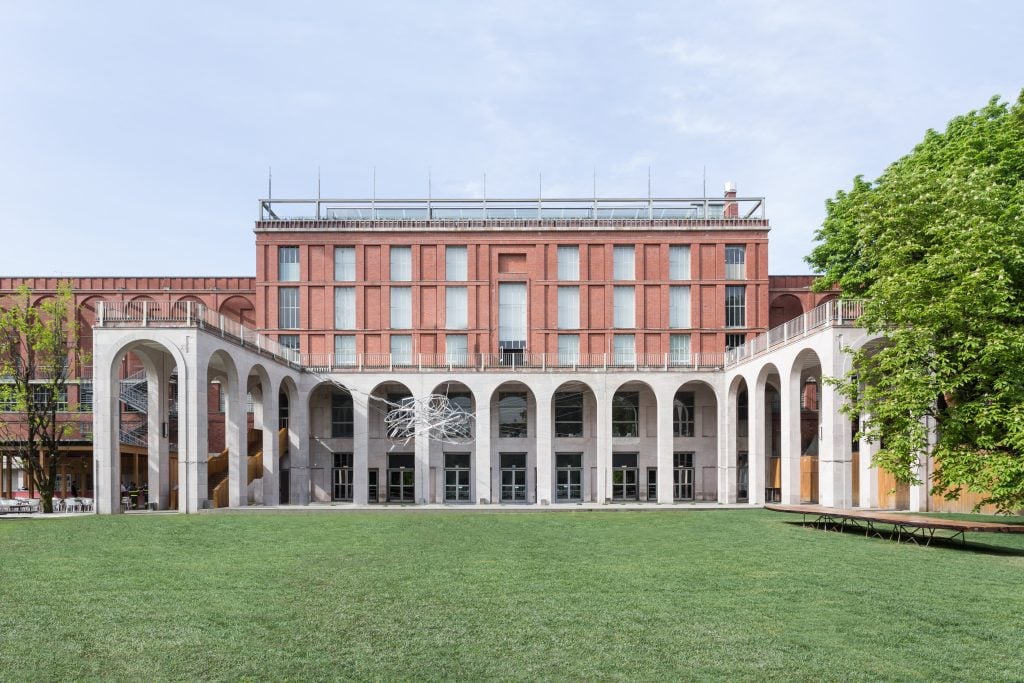
Milan’s Triennale Design Museum. Photo: Gianluca Di Ioia.
As the other half of Milan Design Week, Fuorisalone (September 4–10) is also moving forward IRL, with private showrooms and historic palazzos across the city center opening their doors to exhibit the latest and greatest of contemporary design. Don’t miss the satellite fair Alcova (September 4–12), taking over a cluster of abandoned buildings in a park near the Inganni metro station to host experimental projects from the likes of Ciam, the Italian refrigeration design company, with the New York-based food artist Laila Gohar.
With 145 participating contemporary art, Modern art, and limited-edition design galleries, Milan’s international art fair, Miart (September 17–19), is making an IRL comeback as well. And its organizers are creating a “poetic map to the city” by tapping artists whose work is concurrently on display across Milan to share pieces of writing that inspire them.
There are a few must-visits beyond the fair circuit, including the Association of Industrial Design’s cathedral-like ADI Compasso d’Oro Design Museum. Newly opened inside a ca.-1930 depot for horse-drawn trams, its collections retrace the history of all things Made in Italy.
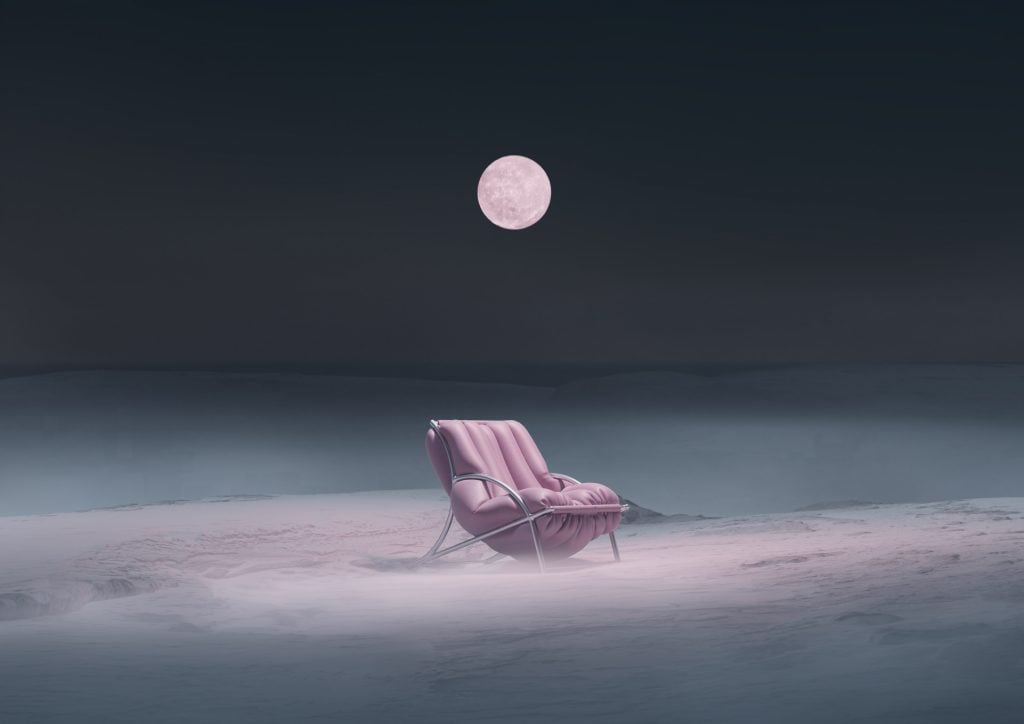
From Andrés Reisinger’s “Odyssey,” at Nilufar Depot during Milan Design Week. Courtesy of Nilufar.
Since Nina Yashar started Nilufar as an antique carpet business in 1979, it has become one of Milan’s most artful design operations. You’ll find an eclectic mix of vintage and contemporary furniture, textiles, and objects between the main Gallery on Via della Spiga and the larger, edgier Depot at Viale Vincenzo Lancetti (its dramatic, three-level layout was inspired by Milan’s Teatro alla Scala). The latter is hosting otherworldly installations from designers such as Argentina’s Andrés Reisinger during Milan Design Week (September 5–11).
A former industrial plant covering more than 161,000 square feet, the non-profit Pirelli Hangar Bicocca now functions as one of Europe’s largest spaces for site-specific contemporary art. Now on view: French-Algerian artist Neïl Beloufa’s immersive “Digital Mourning” (until January 9, 2022) as well as Italian artist Maurizio Cattelan’s “Breath Ghosts Blind,” a three-part reflection on the cycle of life (until February 20, 2022).

Dan Flavin, Untitled, at the Santa Maria Annunciata in Chiesa Rossa. Photo: Roberto Marossi, courtesy of Fondazione Prada.
And if you visit one church, we’d suggest Santa Maria Annunciata in Chiesa Rossa, where, 25 years ago, priest Giulio Greco invited the late American artist Dan Flavin to create a site-specific work that would be central to its restoration. A year later, in collaboration with New York City’s Dia Center for the Arts and the Dan Flavin Estate, Fondazione Prada helped bring Flavin’s iconic Untitled to life as a multicolored light installation that illuminates the entire space.
Eat and Drink: With its colorful Formica furnishings and characterful staff, Fondazione Prada’s Wes Anderson–designed Bar Luce feels like a film set, and is a fun spot for a coffee, a spritz, or a panini lunch.
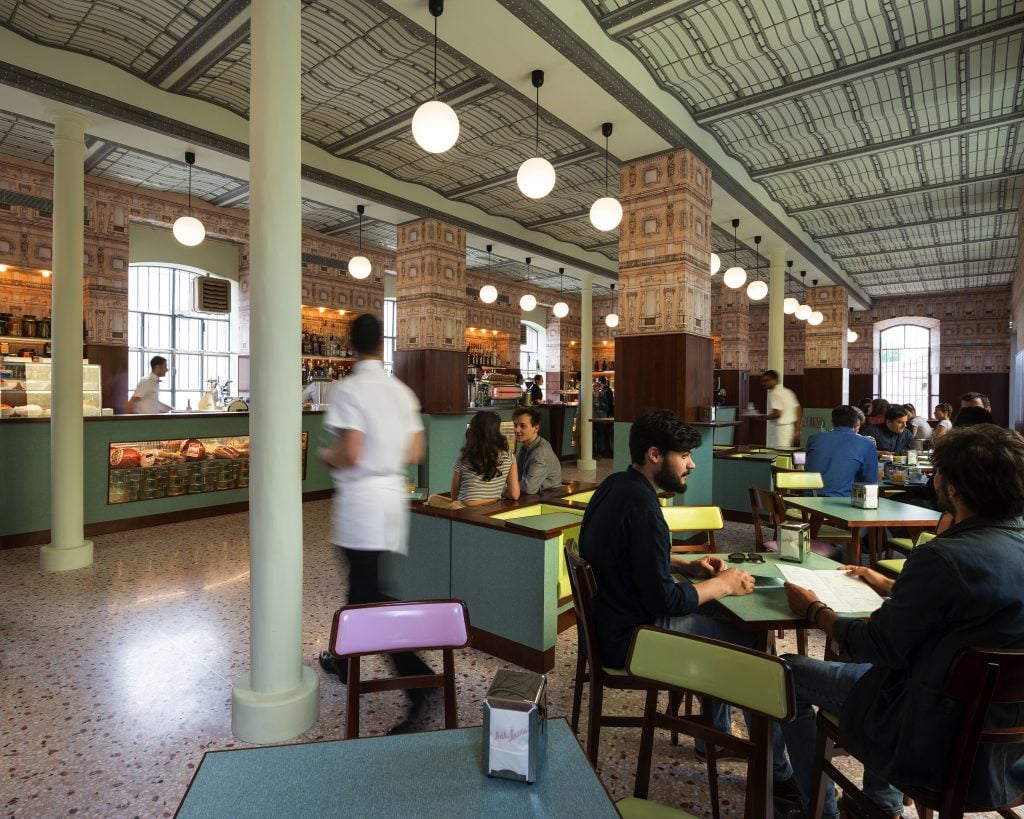
Fondazione Prada’s Bar Luce, in Milan. Photo: Attilio Maranzano, courtesy of Fondazione Prada.
For dinner, try Voce Aimo e Nadia in the historic palazzos of the Museum of Galleria d’Italia, with its magnolia-shaded Garden of Alessandro Manzoni. Chefs Fabio Pisani and Alessandro Negrini serve a special Calvisius Caviar menu as well as dishes inspired by the garden and its namesake Italian poet and novelist.
Stay: Formerly a family residence, the Neoclassical Senato Hotel now has 43 guest rooms with herringbone-oak floors and bathtubs carved from Carrara marble, plus an intimate rooftop with cocktail service in central Milan.
A restored 18th-century palazzo downtown, with sketches of jewels adorning the linen walls of its 58 rooms and suites, the garden-flanked Bvlgari Hotel would be a fitting choice for Italy’s fashion capital. We’d highly suggest a visit to the spa, with its glass-walled, gold-tiled swimming pool.
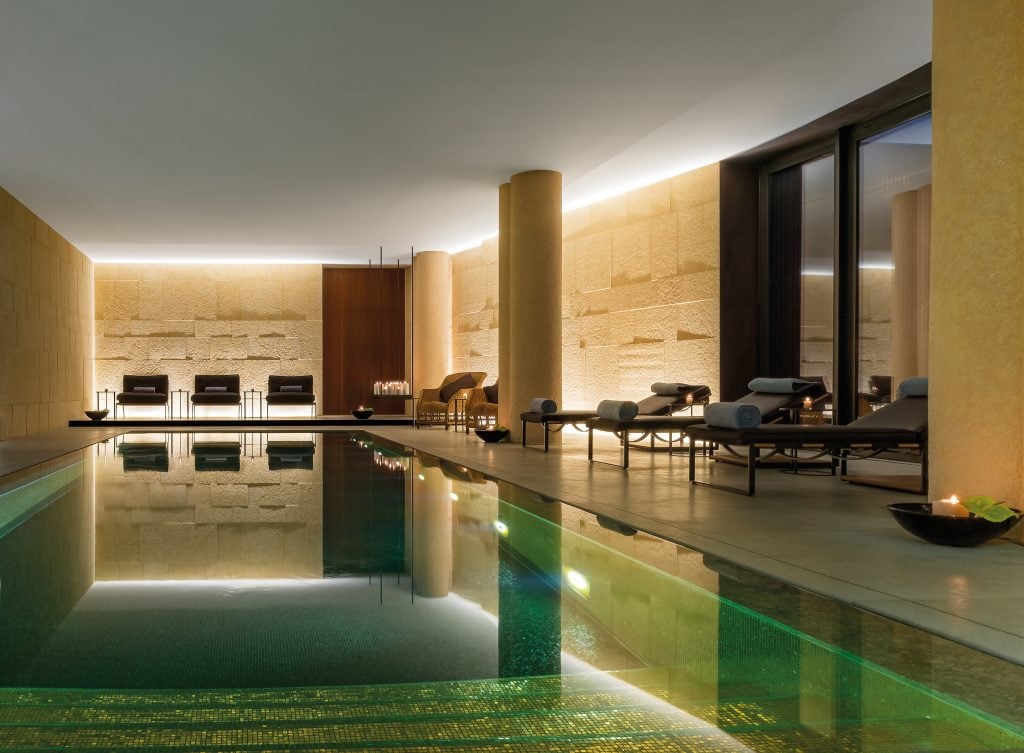
The gold-tiled swimming pool in the Bvlgari Hotel Milano spa. Courtesy of Bvlgari Hotels & Resorts.
Travel safely without the hassles of crowded airports and maximize your leisure time with NetJets. With global access to more than 760 aircraft worldwide in 5,000-plus airports across 200-plus countries and territories, the travel possibilities are infinite.
Enhanced aircraft cleaning protocols, the most experienced pilots, and an unparalleled commitment to safety mean you can relax en route to your destination with total peace of mind—which is the ultimate luxury.
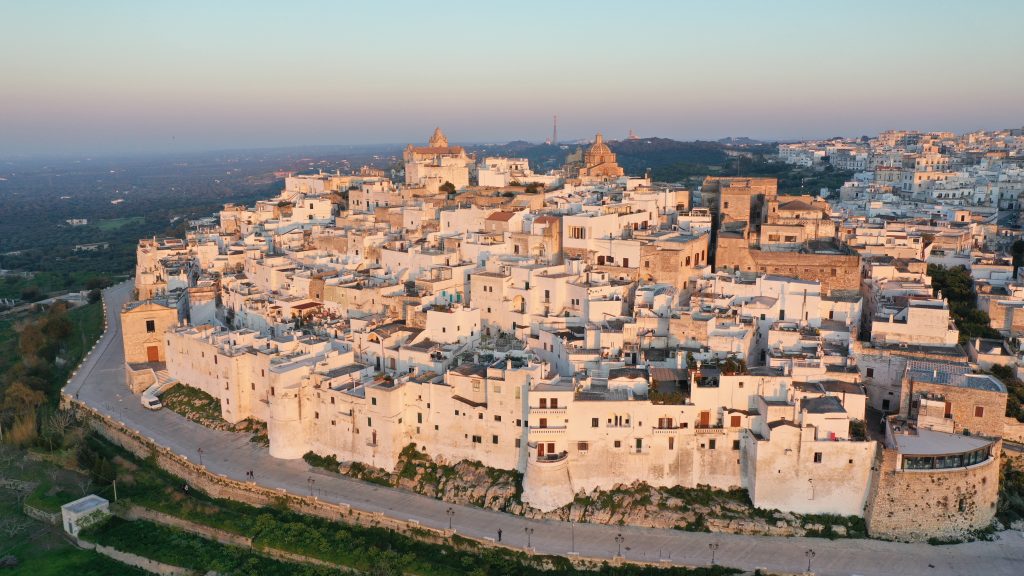
Ostuni, Puglia’s “White City.” Courtesy of Paragon 700.
See and Do: With its turquoise waters, limestone cliffs, olive groves, and many an old masseria (farmhouse), Puglia—the provincial heel of the boot—is the polar opposite of Italy’s fast-paced fashion capital. And lately, it’s become something of a hotspot between the Adriatic and Ionian Seas.
The region has played muse to artists including the Italian photographer Massimo Vitali, who famously captured the leisurely beach scenes from Polignano a Mare to Torre Pali. More recently, the Milan-born sculptor Edoardo Tresoldi “resurrected” the bones of an ancient basilica that was once located in the Archaeological Park of Siponto (it was abandoned after earthquakes ca. 1255). His monumental (and permanent) installation, Basilica di Siponto, was constructed entirely from wire mesh—a contemporary counterpoint to the remaining Romanesque church.
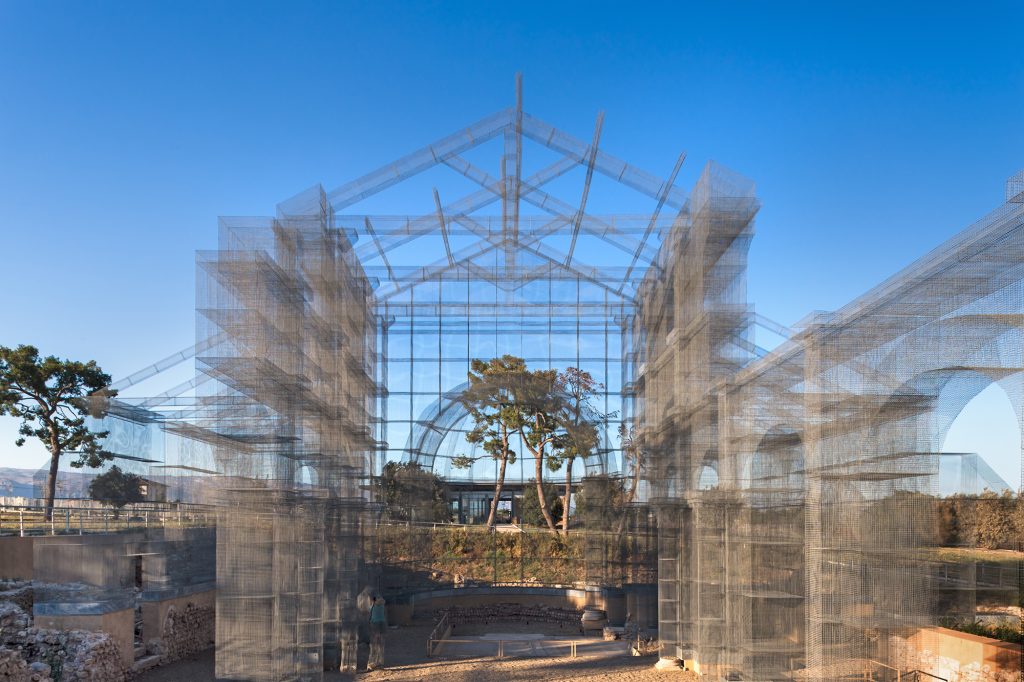
Edoardo Tresoldi, Basilica di Siponto. Photo: Roberto Conte.
Known for its papier-mâché tradition and nicknamed the “Florence of the South,” the small town of Lecce has been making an especially large splash. Last summer, its Piazza del Duomo became the setting for Dior’s Cruise 2021 collection show, nodding to the heritage of the fashion house’s artistic director, Maria Grazia Chiuri, whose father was born in Puglia (she’s been visiting her whole life).
And two years ago, after traveling to the region for research, the New York and now also Lecce–based artist Jamie Sneider turned a 2,300-square-foot palazzo near the sea into Progetto, a residency and contemporary art space with airy rooms where artists are invited to work as they wish.
Lecce’s art scene may be small, but it is growing: this summer, Paris galleries Ciaccia Levi and Balice Hertling—whose co-founder, Daniele Balice, is a Lecce native—invited Shanghai’s Antenna Space, Blum & Poe from Los Angeles and Tokyo, Sadie Coles HQ from London, and other contemporary art dealers from around the world to stage “Palai” (until September 15), a group exhibition in the 16th-century Palazzo Tamborino-Cezzi.
Eat and Drink: Set in a natural cave overlooking a private cove at Polignano a Mare, the ca.-1700 Restaurant Grotta Palazzese is a stunning spot for a candle-lit seafood dinner (think fresh Adriatic sea bass with broad bean purée, Tabasco chicory, and tomato powder).
With its vaulted brick ceilings, the 18th-century dining room (formerly an olive press) within the whitewashed, 40-room Masseria San Domenico serves traditional Puglian dishes such as orecchiette with cime di rapa (broccoli rabe) made using the house’s own olive oil and vegetables grown on site.

A guest room at Paragon 700, in Puglia. Courtesy of the hotel.
Stay: Standing out amid Puglia’s “White City,” in a 17th-century Pompeii Red palazzo that was once home to the first mayor of Ostuni, Paragon 700 Boutique Hotel & Spa was recently restored with its original fireplaces, frescoes, and private garden intact. Expect 11 old-meets-new rooms, a majolica-tile bar, and a wine cellar where there was once an olive oil chamber; not to mention, the former water chamber has been converted into a spa with a natural whirlpool.
With their respective backgrounds in architecture and real estate, Roman brothers Giorgio and Giulio Angella worked with local craftsmen to restore a ca.-1800 masseria and four 16th-century trulli (traditional Puglian huts with conical limestone roofs) following the principles of bio-architecture. The exclusive-use Ostuni Art Resort houses their collection of contemporary art from Italy and abroad, and up to 16 guests.
To learn more about the advantages of flying with NetJets, visit netjets.com.